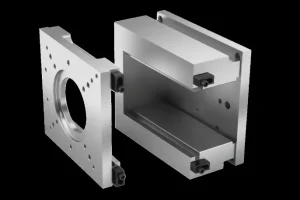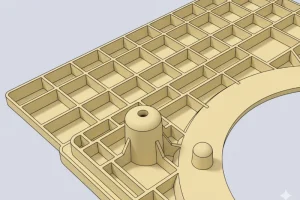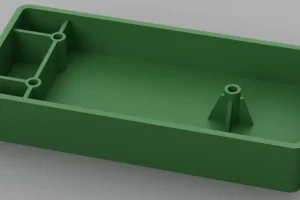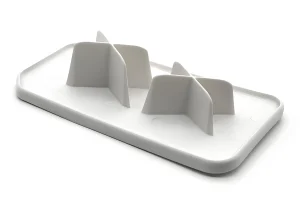Obtaining an accurate injection mold quote is an essential part of a successful molding process. To get the most accurate quote, you should gather as much information as possible about the parts you need to mold. The more information you can provide, the faster and more accurate your quote will be.

Importance of detailed dimensional cad drawings
Injection molders can form the most accurate quotes if they have a clear picture of your part. This is achieved with detailed dimensional drawings, which provide information about part size, complexity, and part design.
It is also important to provide samples. These can help molders identify any design tweaks that will improve the part’s manufacturability.
Detailed dimensional drawings help the injection mold manufacturer accurately injection molding quote the cost of your project. In general, most dimensions on a drawing do not need to be held to a tolerance of 0.005″, but tighter tolerances will increase the price considerably.
Additionally, you need to identify which dimensions are truly critical to your part’s form, fit, and function. You should then specify how you want the dimensions of the existing molds to be held to, including the type of hardened steel you plan to use and whether you need inserts to be installed or added. In addition, you should include the cost of any machining that may be necessary to get the part into its final form.
The injection molder will need to know the intended end-use of your part. This information helps them understand the required resin and calculate the wear and tear over time. Moreover, if you’re creating medical metal parts, it is important to use a chemical-resistant resin such as PEEK.
If the injection mold design of your part has overhangs, you will need a side-action core. These types of cores can be costly and take longer to produce.

Description of the intended use of your plastic parts
While the form of your plastic part is certainly important, this is not the only consideration when getting an injection mold quote. Your accurate injection molding quotes will also depend on the number of parts you need.
If you are working with a small batch, consider using a less expensive mold material cost. Once you have a good idea of how many plastic parts you need, you can talk about lead time and other details with your service provider.
If a new injection mold is required, further information will be required for the machine shop to move forward, including a part design or sample part, estimated annual usage, plastic resin material used for molding, secondary operations required, and any special-quality inspection procedures for critical dimensions.

When getting an injection mold quote, it is crucial to provide an accurate and precise description of what you are looking for in a plastic part. If the quote is inaccurate, it will negatively impact your budget and your bottom line.
In addition, an inaccurate quote can result in cost overruns. This is why it is so important to get a quote as early as possible. This allows you more time to plan your budget. However, keep in mind that an early quote should be considered as a ballpark figure and not set in stone.
While it may be tempting to go for the cheapest quote, you should remember that selecting the lowest price per piece can lead to problems with quality, deliverability, and support. This can jeopardize your supply chain.
You should also consider the raw materials used for your project. The resin used should be suitable for the end use. For example, if the plastic part is going to be exposed to chemicals, it should be FDA-approved. In addition, it should meet the standards of the REACH regulation. Lastly, it should be able to withstand the intended exposure to chemicals and the elements.

Cost of resin
The cost of thermoplastics can vary greatly, and the choice of resin can be a major determinant of tooling costs per part.
A few options include engineering resin, which has high strength and resistance to chemicals, and commodity resin, which is much less expensive but has a lower strength.
You can also consider using recycled materials, which are often less expensive than virgin materials. For more information, visit Plastics News.
One way to reduce your cost is to reduce the size of the mold. The bigger the part, the larger the mold needs to be, and the more material needs to be injected. However, larger molds are generally more expensive.
Consequently, smaller molds may be more cost-effective if your production molding is low-volume. Other options for reducing costs include using cheaper resin and enhancing its strength.

Plasticizers and mineral fillers are the most inexpensive types of additives, while heat stabilizers and pigments can be more expensive. A few other types of additives that can increase the resin’s strength include glass fiber, ceramic fillers, and UV stabilizers.
The cost of resin for injection molds is determined by several factors. Your minimum order quantities volume, the materials used, and the mold’s design and complexity are all key determinants.
Remember to consider the number of parts you need to produce and the price per piece. Higher production volumes usually result in lower overall costs.
Cost of assembly
Creating and assembling an injection mold requires a high initial investment. This investment is mitigated by the combination of moderately priced thermoplastics and low production times.
In addition, automated processes help to reduce the total cost per part. Additionally, the cost of other components decreases with the volume of the job.
Depending on the complexity of the part, a simple mold can cost anywhere from $3,000 to $6,000, while larger, multi-cavity molds can cost up to $50,000. The overall cost of a mold depends on several variables, including the number of parts produced, order volume, molding pattern, and equipment used.

Estimated future demand
To get an accurate injection mold quote, it’s important to understand the variables that go into determining the price. In general, the molder must calculate the optimal quotation within a specified range and determine how much the injection molded parts costs.
There are several variables to consider, including lead time, production capacity, and other factors. A proper calculation must start with a reference point so that the accurate injection molding process can be properly managed.
Another factor to consider when getting an injection mold quote is the volume and time requirements for the project.
The mold builder can then design the existing mold to meet these requirements. In some cases, it may be necessary to use multi-cavity molds to achieve a high-volume output.
The material used to make the mold is also an important factor to consider. Steel is a common material for custom injection molds, but it can be expensive to produce. Tooling is much slower when made out of steel, which is why it is typically used for high-volume projects.
The main advantage of steel tooling is that it offers superior wear resistance. However, more modern materials such as higher-grade aluminum have closed the durability gap and can produce hundreds of thousands of parts without any wear.
When getting an injection mold quote, it is important to consider lead time. This time frame is the time required for a product to be completed. The lead time starts from the time the purchase order is placed and ends when the finished product is delivered to the company.










